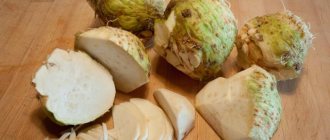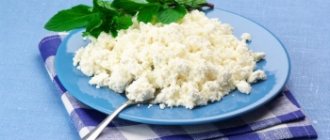Why are the fruits of the olive tree so beneficial?
Olives are a very healthy and nutritious product. The fruits contain a huge amount of fatty acids, rich in their beneficial properties. They differ not only from animal oils, but also from vegetable oils.
The calorie content of olives with pits is quite high, it is 160 kcal per 100 grams. The high fat content of the fruit allows you to obtain high-quality oil from it. It does not contain cholesterol, which is so harmful to the body. But the oil is rich in vitamins, fatty acids and fiber. This composition makes olives simply irreplaceable for those who want to stay young, healthy and beautiful longer. A large number of face and body masks are made based on the fruits of the olive tree, because their vitamin composition is beneficial for the skin and maintaining its beauty.
Another unique property of olives is their ability to improve the functioning of the digestive tract. They stimulate appetite, improve the process of digesting food, and activate intestinal function.
Olives are rarely sold in their pure form. They are mainly preserved with various spices, additives and oils. This cocktail has even more beneficial properties and strengthens the entire body as a whole.
Product Description
Olives are the fruit of the olive tree of the olive family. Their homeland is the Mediterranean countries. Since ancient times, people have collected olives and extracted valuable oil from them. Nowadays, the plant, in addition to Mediterranean countries, is also cultivated in South America, Mexico, Central Asia, Transcaucasia and Australia.
The largest suppliers of olives on the world market are Italy, Spain, Greece, Morocco and Tunisia.
The tree blooms from mid-spring to early summer. The white flowers of the plant are collected in racemes. The fruits are elongated oval in shape with a large seed and juicy, oily pulp. The color
of olives depends on the time of harvest.
Green fruits are harvested in October, black ones in December. Olives have a bitter taste, so they are not consumed raw. They are used to extract high-quality oil, which is used in cooking, folk medicine and cosmetology. The popularity of olive oil is due to the high content of vitamins, minerals and fats in its composition.
Before eating, olive fruits are placed in a salt solution to remove bitterness while preserving their beneficial properties. On sale is a large assortment of canned black and green fruits for every taste, with or without seeds.
Calorie content of olives
Olives are the fruits of the subtropical tree Olea europaea. The height of the olive tree reaches 10 meters; in the spring it is decorated with many small snow-white, very fragrant flowers, which then form bright green drupes measuring from 1 to 4 centimeters. They consist of an oval stone and a fleshy pericarp, and therefore are often classified as berries. As olives ripen, they turn grassy, then purple, reddish brown or black. Fully ripened olives are called olives; both green and ripe ones are used for food. Up to 50 kg of fruits are collected from one tree.
Olea europaea is a long-liver, its average lifespan is 500 years. Trees up to 300 years old are considered productive. They say that the olive trees growing on the Mount of Olives in Jerusalem are more than 2 thousand years old. Greece is still considered their homeland. Currently, large plantations of olive trees are located in Spain, Italy, and they are also grown in the Caucasus, Crimea, Iran, India, Pakistan, Peru and Mexico.
World-famous olive oil is obtained from the fruits of the Olea europaea tree; they are also valued for their excellent taste and healing properties. Including olives in the diet helps prevent:
- anemia;
- hypertension;
- thrombophlebitis;
- vascular diseases;
- diabetes mellitus;
- diseases of the digestive system;
- cholelithiasis and kidney stones;
- bone diseases.
Beneficial features
Some people believe that eating olives with pits has a beneficial effect on a person’s well-being due to the oils they contain. However, doctors strongly advise eating seedless fruits, since they are not processed by the body and, accordingly, do not provide any benefit to it.
Beneficial properties of the product for the human body:
- 1. 6-7 olives eaten before the main meal are an effective prevention of stomach ulcers.
- 2. Regular consumption of fruits improves the rheological properties of the blood, helping to reduce the likelihood of blood clots.
- 3. 100 grams of olives contain a third of the daily requirement of vitamin E - a natural antioxidant that protects the body from premature aging and destruction.
- 4. Potassium, magnesium and phosphorus in the fruit are necessary for the normal functioning of blood vessels, the nervous system and the brain.
Properties of olives
Nutritional value and composition | Vitamins | Minerals
How much do olives cost (average price for 1 jar)?
Moscow and Moscow region.
60 rub.
The olive tree originated in the Mediterranean, where it is still widespread today. The origin of this plant is explained in different ways. Some sources report that olives were first bred by ancient breeders and after that some species went wild. Others say that, on the contrary, wild olives were cultivated and in this form began to serve man.
The ancient Greeks believed in the mythical origins of the olive tree. Allegedly, this plant was given to people by the goddess of wisdom Athena. Be that as it may, olive branches are often mentioned in the history and culture of Ancient Greece, which suggests the exceptional significance of this plant for humans.
Currently, olives and black olives are very popular in Russia. By the way, the fruits of this plant have two names only in our country. In the rest of the world they are simply called olives. And the difference between olives and black olives is only in the different degrees of ripeness of the fruit. Olives are the unripe fruits of the olive tree, while black olives are fully ripe. Let's follow the tradition that has developed in our country and talk about these fruits separately. Now we will talk about olives. The beneficial properties of olives are known and celebrated as much as the plant itself.
Contraindications
If you have the following pathologies, olives should be eaten in moderation or completely excluded from the diet:
- Kidney diseases.
- Inflammation of the gallbladder.
- Hypertension.
- Heart failure.
- Cardiac ischemia.
Doctors and nutritionists do not recommend eating olives with various fillings (fish, shrimp, lemon, etc.). In the process of making such snacks, many manufacturers use flavoring additives and preservatives, which are harmful to the body and contribute to excess weight gain.
Olives are the fruits of a tree called the European or cultivated olive, also called the olive tree. This plant is an evergreen and is found in Mediterranean countries. The tree can live for thousands of years; it is distinguished by its high endurance and undemanding quality of soil. Today, olive trees are widely cultivated in countries such as Spain, Greece, Israel, Italy, Azerbaijan, as well as on the Crimean Peninsula, North Africa, the southeastern part of the USA and Transcaucasia.
The olive fruit is round or oval in shape and has a pit in the middle. In our country, it is customary to call black fruits olives, and green ones – olives. The difference between them is only in the degree of ripeness: black fruits are fully ripe, while green ones are not yet.
The calorie content of olives is quite high, 115 kcal. At the same time, they contain a significant amount of fat - 10.7 g. There are also a lot of carbohydrates here - 6.3 g. Olives also contain proteins, 0.8 g. In addition to the main elements, the fruits contain many useful substances: vitamins C, B, E, P, microelements (iron, potassium, phosphorus and others), pectins, catechins, phenolcarboxylic acids and others.
Olives are divided into two groups depending on the oil content and the characteristics of the fruits themselves. The first group includes fruits with a high oil content, and the second - with less. The first group is often called the olive group. Fruits belonging to the second type are more suitable for processing and preservation. When evaluating canned varieties, be sure to take into account such indicators of olives as the weight of the fruit, the ratio of pulp and stone (in this case, the more pulp, the more valuable the fruit is considered), diameter, chemical composition and quality of the pulp.
It has been proven that olives are a very healthy product. Thus, with their daily use, the likelihood of developing vascular and heart diseases, for example, heart attacks and angina, is noticeably reduced. The risk of developing cancer is also reduced. The reason for this lies in the fact that olives contain a special type of fatty acids, classified as unsaturated. They are able to reduce the content of bad cholesterol, without having any effect on the good one. Thus, it is possible to maintain the natural balance of the most important elements in the human body. Olives are especially useful for people who constantly live in a hot, humid climate, as they become a kind of natural regulator for the absorption of fats and salts.
There is a claim that the fruits of the olive tree contain almost all the minerals and vitamins that a person needs to maintain life. The olive pulp contains 4/5 of non-drying oil, and it contains unique unsaturated fatty acids. Most of them are oleic acid, almost 75%, and linoleic acid - 13%; others are also contained, but in much smaller quantities. These fats only bring benefits to the body. Their distinctive feature, compared to animal fats, is that these fatty acids do not settle on the walls of blood vessels, that is, they do not lead to the development of diseases of the cardiovascular system.
Spanish oil producers say that eating olives is beneficial at any age; this product is also quite suitable for children's diets. This is due to the content of special acids, which are the main component of vitamin F, and it, in turn, is necessary for the body to build cell membranes. These acids are synthesized to some extent in the body itself, but this is not enough. Regular consumption of olives can eliminate this deficiency.
The Bonduelle company produces several types of olives: with and without pits. The advantages of this product are good, delicate taste, dense texture, moderate amount of salt, absence of spoiled and soggy fruits. Among the disadvantages, many buyers cite the large difference in the size of the olives, as well as the presence of a flavor enhancer - monosodium glutamate.
Olives from this brand are distinguished by an interesting, beautiful design of the jar, which is equipped with a key for easy opening. The product contains the fruit itself, salt and water. In addition, there are citric and lactic acids, which are acidity regulators, ascorbic acid and a flavor enhancer.
The color of the fruit is pronounced green with a yellowish tint. The brine with which they are filled is transparent, with a pleasant light smell of olives.
The calorie content of Bonduelle olives is quite high, about 160 kcal. At the same time, the product contains a large amount of fat (18.2 g), represented by plant unsaturated fatty acids. The carbohydrate component is average, about 5.1 g. Protein in the product is 1.4 g.
Olives
– fruits of the olive tree, Olive family. They are an oval or even in some cases round drupes (see photo). Inside the dark green fleshy pulp there is a small seed. Today in stores you can find olives with and without pits, as well as stuffed with other products, such as capers, almonds or bell peppers.
The Mediterranean is considered to be the birthplace of this plant. At the moment, olives grow in Israel, Greece, Spain and Italy. Fruits can be of different sizes, for example, large olives per kilogram can account for up to 80 pieces. Fresh fruits cannot be eaten as they taste very bitter.
Beneficial features
It has been proven that regular consumption of olives reduces the risk of developing cardiovascular diseases.
, and can also prevent heart attack.
The main benefit is that the fruits contain a certain type of fatty acids that have the ability to remove “bad” cholesterol
without affecting the good one. Thanks to this, the body maintains a normal balance of elements important for life.
The fats contained in olives do not harm the body, but rather prevent the development of atherosclerosis and have a positive effect on digestion. Fruits improve appetite and intestinal function, accelerate the absorption of all nutrients from food, and also help fight various disorders. Since canned olives contain spices and seasonings, this delicacy can accelerate metabolic processes in the body
.
Many believe that olives can be used in children's diets because they contain vitamin F, which is needed as a building material for cells.
Given the high calorie content of these fruits, some nutritionists recommend using them as the basis of a diet. It is also worth separately noting the enormous benefits of olive oil.
Use in cooking
Another excellent property of olives is that they go well with almost all foods, which is why they are widely used in cooking. The neutral taste of the fruit simply cannot spoil the taste of the dish, so they are added to salads, stews, side dishes, as well as fish and meat dishes. In addition, olives perfectly complement the taste of cheese and alcoholic drinks, for example, martini. Mediterranean cuisine has dessert recipes that use olives. Fruits not only improve taste, but also impart beneficial properties to the dish.
Benefits of olives and treatment
The benefits of olives are due to the fact that they contain all the vitamins and microelements necessary for humans. Doctors recommend eating olives to strengthen the immune system. This is ensured thanks to the action of vitamins C and E, which are aimed at increasing the activity of the immune system. In addition, they prevent the action of free radicals, which means they produce an anti-cancer effect.
Treatment with olives can be carried out for varicose veins and hemorrhoids. Since the fruits contain quite a bit of sugar, they can also be eaten if you have diabetes. It is also worth evaluating the positive effect of olives on the nervous system, as they have the ability to improve blood circulation in the brain. Fruits also have the ability to normalize the level of hemoglobin in the blood and improve the condition of gallstone disease.
Harm of olives and contraindications
Olives can cause harm in case of individual intolerance. According to nutritionists, the fruits have no contraindications. But this does not apply to olive oil, since it has a choleretic effect, which means it cannot be used for cholecystitis.
Olives are extremely healthy. They are enriched with saturated fats, vitamins A, C, E, pectin, essential oils, minerals calcium, sodium, magnesium, phosphorus, copper, manganese, iron, zinc, selenium.
The calorie content of canned olives per 100 grams (meaning a pitted product) is 180 kcal. In a 100-gram serving of these olives:
- 2 g protein;
- 16 g fat;
- 5 g carbohydrates;
- 2 g dietary fiber.
Canned pitted olives contain salted pickled olives, salt, drinking water, ascorbic acid (used as an antioxidant), lactic and citric acids, used to regulate acidity.
Canned olives are contraindicated for violations of the water-salt balance in the body. Due to the presence of a fairly large amount of salt in the composition, such a product inhibits the process of removing fluid from the body, which can lead to swelling.
Application
Neither black nor green olives are eaten raw. Raw olives are used to produce olive oil. For culinary purposes, olives are pickled or preserved. The taste of olives also depends on the method of preservation - hot, sour or salty.
In the Mediterranean region, olives are an everyday cold snack. They are served with vegetables, meat, fish, cheeses and alcoholic beverages. So, an olive is always added to a martini glass. Canned olives are also added to hot dishes - pizza, soups, such as solyanka.
Market Analytics
- COVID-19 is changing the rules of the game in the cosmetics market
- Beauty of the future: cosmetic innovations 2020
- New ingredients are the driving force of the cosmetics industry
Convenient search for beauty salons on our website
Beauty salons in Moscow Beauty salons in St. Petersburg Beauty salons in Ekaterinburg Beauty salons in Novosibirsk
Latest blog posts on our website
- Naturecream / Geranium (Pelargonium) oil for skin health and beauty
- Prostye-sovety / Save on a beauty salon: procedures that can be done at home
- Naturecream / Growth Factor - brings back youth?
- Oksana-Lezina / 3 effective abdominal exercises from a fitness instructor for beginners
- Prostye-sovety / Making perfect curls at home
- Prostye-sovety / Which hair removal method to choose
- Naturecream / Wrinkles Puppets
- Naturecream / PEPHA-TIGHT - instant skin lifting
- Naturecream / Blue light - a danger to the skin
- Naturecream / Cocoa Butter – A treat for the skin
Latest forum topics on our website
- Mrs._Smith / Badly sunburned! What to do?((
- Ice / Is it necessary to combine fitness classes with a diet?
- Antonova / What can be used for hair loss?
- Radio operatorKat / Who was on a protein diet?
- Suzanna / Mesotherapy on the face
Other articles in this section
| Sweet green pepper Sweet pepper is shaped like a bell with thick, juicy walls. Its sweet flavor, crunchy texture, and vibrant color make peppers a great addition to any dish. The homeland of bell pepper is Mexico and Central America. Green bell peppers are an unripe fruit that differs from yellow and red ones in their unique chemical composition. |
| Fried potatoes Potatoes belong to the nightshade family, which also includes tomato, eggplant, and pepper. There are more than 100 edible varieties of potatoes, which differ in size, shape and color of tubers, and starch content. The homeland of potatoes is in the mountainous regions of South America. Researchers believe that the Indians began growing this vegetable crop more than 4000 BC. e. Christopher Columbus brought potatoes to Europe, and thanks to Peter I, the vegetable spread to Russia. |
| Lagenaria Lagenaria, or bottle gourd, is a climbing plant of the Cucurbitaceae family. It grows in the tropics, but some ornamental varieties are also grown in the middle zone. Requires a lot of sunlight for flowering and fruiting. The shape of the fruit resembles a pear, or a round bottle. The pulp is white and juicy, with small seeds. Not only the lagenaria fruit itself is eaten, but also the leaves and curly tendrils. |
| Black radish Since ancient times, black radish has been used in Asian countries to treat various diseases. In Europe, this vegetable is not so popular and became known only in the second half of the twentieth century. The plant is completely edible, including the tops and seeds. Black radish benefits the entire body; it is a valuable source of vital substances. |
| Cauliflower Like most cruciferous vegetables, cauliflower is descended from wild kale. Around the 7th century. BC e. it appears in the Mediterranean, in the territory of modern Turkey and Italy. But cauliflower gained particular popularity in medieval France. Cauliflower is similar to broccoli, with a paler color and denser florets. |
| Onions Onions are often called the “king of vegetables” for their pungent taste. Everyone knows about its health benefits. If you eat a small amount of raw onions every day, you can prevent many diseases, especially colds. |
| Sweet potatoes (yams) Unlike regular potatoes, sweet potatoes are not a tuber, but a root. Its homeland is also Central and South America, where the local population has been growing this vegetable crop for more than 10 thousand years. Sweet potatoes also came to Europe thanks to H. Columbus. In the 16th century Spanish and Portuguese travelers spread this culture to the Philippines and Africa. Currently, the largest supplier of sweet potatoes is China, where 80 million tons of sweet potatoes are produced annually. |
| Green beans Green beans belong to the genus Common bean, legume family. It is popular both in European cuisine and in Asian and African countries. This versatile vegetable crop grows in various climatic conditions, which is why it has become so widespread throughout the world. Bean pods are picked green without waiting for ripening, which is why they are also called green beans. |
| Tomato (tomato) Although the tomato is considered a vegetable, it is actually a fruit. It is believed that the homeland of the tomato is in Mexico, and in the Middle Ages the Spaniards brought it to Europe. Currently, tomato is an essential component of a huge number of Mediterranean dishes. This is an annual plant of the nightshade family with round fruits of a sweetish taste. The most common tomatoes are red, but yellow, orange, black, and pink are also grown. There are several thousand varieties of tomatoes around the world. |
| Canned red beans Red beans are one of the most popular varieties of beans. It contains unique nutrients that are not found in other types. Also, red beans retain their shape during cooking. At home, beans are usually canned in brine with vinegar. In production, red beans are sealed “in their own juice,” using only a brine solution. |
The benefits of canned olives
The beneficial properties of canned olives are:
- The product is recommended to be included in the diet to stimulate the functions of the heart muscle. Olives contain monounsaturated fats, which normalize blood pressure;
- the product has a beneficial effect on the functioning of the stomach and intestines, as it is enriched with fiber that is beneficial for digestion;
- for anemia, olives help improve the blood formula;
- due to their pronounced antioxidant properties, olives are a preventive measure for the development of oncology;
- Thanks to its antihistamine properties, this snack helps reduce allergy symptoms;
- Product pectins remove waste and toxins from the body and normalize intestinal microflora.
Olives - benefits and harms of fresh, canned, calorie content
The olive tree is characterized by amazing vitality. It can grow even from the smallest root left in the ground.
The plant can stand for centuries, even if it is split by lightning. In Mediterranean countries it is believed that those who consume the fruits of the plant receive the same vitality.
It is worth taking a closer look at how olives are good for our health.
The fruits of the olive tree, like olive oil, are very highly valued. Processing methods that eliminate their bitterness have been discovered relatively recently.
How to choose a canned product
Many people do not understand the difference between olives and black olives. These are the fruits of the same olive tree , but collected at different periods of their ripeness.
When ripe, they can change color from bright green to dark purple or black. Olives are young fruits that have not yet ripened , while olives are fully ripened.
The fruits of the olive tree are:
- Green. They are collected before technical maturity, but are already of normal size.
- Combined. They are collected during the ripening period, but before full maturity.
- Black. They are harvested when fully ripe.
- Blackened by oxidation. The fruits are unripe, but color is achieved by treating with an alkaline solution.
Using the labeling system, it is difficult to determine which olives were prepared traditionally and which were prepared using the accelerated technology. If they were artificially colored, the brine will contain iron gluconate (E579) .
Olives also differ by variety. Their main characteristic is their caliber. Its value is equal to the number of fruits per 1 kg of dry weight.
To ensure that the selected product is of decent quality, consider the following points:
- Please note the manufacturer . The world's main suppliers of olives are Italy, Greece, Spain. But they are also produced in Israel, Chile, Tunisia, Argentina. Elite Greek olives are the most expensive. They have a rich taste, dense flesh, and a small bone that is easily separated.
- Consider the expiration date. Naturally prepared olives cannot be stored for more than six months. If the shelf life on the package is longer, then preservatives (lactic acid) were used. They can increase the shelf life up to three years, but worsen the taste of the product and its benefits.
- Olives can be sold in glass or tin containers. The tin one is cheaper, it does not allow light to pass through. The glass one allows you to see the size of the olives before purchasing. Glass will not react with the product. Do not buy olives with a cloudy, opaque marinade - they are of poor quality.
- If the product is good, the packaging will indicate the caliber . The smaller it is, the larger the fruits will be. Standard – 80-320 olives. The maximum spread is indicated on the can, for example, 120/150. If there is too much scatter, it makes sense to say that different varieties are pickled in the container.
- Ripe completely black olives are used not for preservation, but for the production of olive oil. Black color is the result of processing . Don't be afraid of the unusual tone of the fruit. It depends on the place where the plant grows, the variety, and the level of maturity - from pink to black-violet.
- If you want to buy a quality product, be prepared to spend money . Good olives are hand-picked and take a long time to prepare, so they cannot be cheap.
Chemical composition, calorie content and nutritional value
Olives are a valuable nutritious product . They include about a hundred active components, vitamins A, C, E. The pulp contains fats, proteins, sugars, pectins, ash components, and plant lipids. The peel is also useful.
100 g of product contains 2.2 g of protein, 5.1 carbohydrates and 10.5 fat.
Calorie content of 100 g of olives – 166 kcal. One piece weighing about 3 g contains approximately 5 kcal.
Health Benefits
The fruits of the olive tree contain valuable polyunsaturated fats that help normalize cholesterol levels. Proteins, sugars, vitamins, mineral salts, and esters are valuable.
The composition contains minerals (copper and sodium), dietary fiber. Dark olives are rich in antioxidants.
This combination of beneficial substances has a beneficial effect on the entire body, maintaining and strengthening health.
Regular consumption of olives and olive oil helps normalize and strengthen the functioning of the gastrointestinal tract. The fruits have one unique feature: they almost completely eliminate the risk of stone formation in various organs.
To ensure the prevention of this problem, it is enough to eat only five pieces a week . It is advisable to eat them with seeds, but if you have digestive problems, their use may be contraindicated.
The following properties of olives are known:
- Help reduce the risk of a number of types of tumors.
- Ensure normal functioning of the digestive system and fight constipation.
- Normalizes the functioning of the gallbladder.
- Restore the gastrointestinal mucosa.
- They help speed up the healing of skin damaged due to burns, cuts, and bruises.
- Cleanse the body.
- Normalizes cholesterol levels.
- Helps preserve calcium in bones.
- Reduce the likelihood of angina pectoris and cardiovascular system disorders.
- Calms the nervous system.
- Maintains good mood, energy, vigor.
Regular use of the product helps to significantly reduce the risk of vascular diseases and heart attack.
Benefits for men and women
Women value them because the fruits have a beneficial effect on the condition of the skin and hair. Vitamin E helps slow down the aging process . And olive oil is one of the favorite products in cosmetology.
This product is also useful for men . It helps them improve potency and increase sperm activity. If you eat olives with pits, you will ensure the prevention of prostatitis and prostate diseases.
Are olives harmful during pregnancy and for nursing mothers?
These fruits, provided they have ripened naturally, are beneficial for pregnant and lactating women. They help maintain tone and performance , which are weakened during this period, and saturate them with vitamins and minerals.
Preserve the beauty of skin and hair , which suffer during pregnancy. But do not eat olives in too large quantities to avoid a negative reaction in your baby.
Olives in the diet of children
The vitamins and minerals in the composition are valuable for children . They contribute to the correct formation of the skeletal system and adequate development of all internal organs. A few olives a day will only benefit your child.
Use in old age
In older people, the product will retain calcium in the bones and reduce the risk of various diseases. Vitamin E in the composition is valuable: the skin will remain young, fresh, and elastic longer.
Contraindications and potential dangers
Olives can be dangerous. It is not recommended to use them for those who suffer from cholecystitis. This can be explained by their choleretic properties.
When preserving a product, not the most beneficial chemicals may be used. The most dangerous is iron gluconate . It can cause a number of problems, from an allergic reaction to a stomach ulcer.
You need to choose high-quality olives without dangerous processing - they will only bring benefits to the body.
You will learn more about the benefits and potential harm of canned olives from the video program “About the Most Important ...”:
How to eat olives
The consumption rate for olives is 7-8 pieces . For people who regularly face severe mental or physical stress, this number can be increased to 15.
It is useful to eat these fruits little by little, but regularly.
- Olives are used in cooking in different ways . They are eaten as a separate snack. The fruits are good for decorating dishes, because they look beautiful, and their universal shape allows you to create any cuts.
- Olives are actively used in soups: they fit into solyanka and kharcho soups. Just a few fruits will significantly improve the taste of the first dish.
- This is a common ingredient in salads: vegetable, fish, meat. A striking example is the famous Greek salad. Black fruits go well with cheese.
- In Mediterranean cuisines, sauces and gravies are popular , where olives are an indispensable component. Black berries go well with white wines, meat, poultry, green berries go well with red wines, fish, and seafood.
Here are a couple of healthy salad recipes with this popular ingredient:
- Light and nutritious salad. Cut two ripe tomatoes and 200 g of cheese into cubes. Cut half a can of pitted olives in half. Chop parsley and basil. Place the ingredients in a salad bowl, mix them, season with lemon juice and vegetable oil.
- Spicy chicken salad. Ideally complements dry white wine. Cut 250 g of chicken fillet into cubes, add salt and fry in vegetable oil until cooked. Take 60 g of almonds, chop and fry. Cut 120 g of blue cheese into cubes. Then you will need a large flat dish on which you need to place about 240 g of different lettuce leaves (ready-made mixtures are sold in stores). Place chicken, onion and cheese on top. Salt and pepper the salad to taste. Season with lemon juice and olive oil. You can decorate with almonds and the same olives, cut in half.
Interesting: Green buckwheat: benefits and harms, calorie content, beneficial properties
In this video, learn the recipe for making delicious pizza with olives:
Olives for weight loss
Olives are not considered a low-calorie and dietary product, but nutritionists often advise those losing weight to include them in their diet . They ensure the full functioning of all organs and systems, improve the digestion process, and help cleanse the body, which is necessary for proper and healthy weight loss.
The linoleic acid in the composition deserves attention ( refers to Omega-6 fatty acids). These essential acids also have a beneficial effect on the fight against excess weight.
Thanks to their balanced composition, olives are remarkably filling. Eat a few of these and you might save yourself from severe overeating.
Therapeutic effect and recipes of traditional medicine
If you simply eat olives regularly, your health will improve. But there are also separate folk recipes used for treatment, made from fruits and leaves.
- For atherosclerosis. Grind 200 g of olives, place them in a thermos, fill with vegetable oil heated to a temperature of 60 degrees. Leave to infuse for two days. Take a tablespoon three times a day before meals.
- From edema. A tincture based on the leaves and fruits of the olive tree will help. To prepare the medicine, pour a glass of boiling water over a tablespoon of chopped olives and leaves. Leave to infuse for 5-10 minutes in a water bath, then filter and add another glass of warm water. Take a tablespoon of infusion 30 minutes before meals three times a day.
- With high blood pressure. Pour a tablespoon of olive tree leaves with a glass of boiling water, hold for five minutes in a water bath, strain, dilute with warm water. Take 1-2 tablespoons thirty minutes before meals three times a day.
How to use olives in cosmetology
Fresh olives are also used in the cosmetology industry.
An extract based on their skin has a good antioxidant effect , so it is added to European-made factory cosmetics.
Many women cannot imagine their lives without olive oil . It is used to make massage mixtures, perfumes, masks, face and hair creams.
Products containing it have powerful nutritional properties and saturate the skin and hair with essential substances.
It is also used in its pure form . Regular use of olive oil will eliminate fine wrinkles, refresh the skin, and make hair shiny and radiant.
Much less often, dry olive leaves are added to the composition of the products, which can be bought at the pharmacy.
Source
Harm of canned olives
As already mentioned, canned olives contain a lot of salt, which disrupts the water-salt balance of the body and provokes swelling. You will have to avoid this snack if you have diarrhea: olives have a laxative effect.
The possibility of including olives in the diet should be checked with a doctor in case of cholecystitis and pancreatitis. The product has a fairly strong choleretic effect, so it provokes exacerbations of these diseases.
It is a fairly common belief that olive seeds are very beneficial. Such bones are not digested by the gastrointestinal tract, so they will not benefit your stomach and intestines.
Olives are very tasty fruits that can provide the human body with vitamins and minerals. Their healing properties should be taken into account:
- Prevents bone loss.
- Prevent various types of cancer.
- Reduce inflammation and symptoms of arthritis.
- Improves digestion.
- Calms allergic reactions.
- Protects against cardiovascular diseases.
- Increase cognitive function.
- Lower blood pressure.
Olives are perhaps the most famous fruit in the Eastern Mediterranean regions. They have been used in cooking and medicinal preparations for over a thousand years. The oil obtained from the fruit has gained great popularity in modern cooking. It comes in a concentrated form, but it is important not to overlook the health benefits that the olives themselves have. The calorie content of these berries is quite low compared to other drupes.
There are many different types of olives, and some may have more or less nutrients, but they all have certain elements that make them essential in a healthy diet. They are widely used in cooking, added to salads, sandwiches, or eaten as a snack. used in many recipes and is a source of essential amino acids.
Olives are a good source of vitamin E (tocopherol) and other powerful antioxidants. Research shows they are good for the heart and may protect against osteoporosis and cancer.
An easy way to add variety to your diet is to add delicious and nutritious olives to your diet. Calorie content 1 pc. canned fruit approximately 6 units (kcal). They can be eaten by those who care about their figure.
The calorie content of olives and olives is slightly different, despite the fact that they are the fruits of the same tree.
Olives are oval in shape with an average weight of about 3-5 grams. Some unripe fruits are green and turn black when ripe. In our region they are usually called olives. Others remain green even when fully ripe.
It is worth noting that black olives, whose calorie content is 145 kcal per 100 grams, are the most suitable for creating Provençal oil.
In Mediterranean countries, 90% of olive fruits are used to produce olive oil.
Olives
Olives are the dark-colored fruits of the olive tree.
An interesting fact is that black olives are called olives only in Russia; the rest of the world distinguishes between dark and green olives. In fact, the color of olives is not limited to black; there are berries of dark cherry, red-brown, dark purple and chocolate color. Olives ripened on the branch rarely have a glossy black color and a smooth surface; they are slightly wrinkled and their color is uneven. The flesh of olives is dense, oily, the taste and smell are specific; not everyone “recognizes” olives the first time. Sometimes there is a hint of smoke in the taste. The main suppliers of olives are Greece, Spain, Italy, Turkey, Syria, and other countries in the Mediterranean region and the Middle East.
Calorie content of olives
The calorie content of olives is 166 kcal per 100 grams of product.
Composition and beneficial properties of olives
The correct composition of the product is the absence of E-additives: ripe olives, water, salt, lactic acid. The vitamin-mineral complex of olives includes: vitamins A, C, E, potassium, iron, sodium, unsaturated fatty acids, essential vegetable fats. The product helps eliminate toxins from the body due to the presence of fiber. Olives are recommended for consumption by those who have problems with the cardiovascular system, because the berries reduce the level of “bad” cholesterol, thereby reducing the likelihood of cholesterol plaques on the walls of blood vessels.
Harm of olives
The shiny black color and elastic flesh indicates that the olives have been treated with chemical additives - sodium hydroxide (E524) and iron gluconate (E579). Fresh olives are not suitable for consumption; they must undergo a canning process, which uses salt and seasonings. There are no olives with fillers on sale; you can stuff the berries at home, after opening the jar.
Olives contain a sufficient amount of salt, which retains moisture in the body, increasing the load on the kidneys, heart and blood vessels. In rare cases, an allergic reaction may occur, usually an upset stomach.
If olives contain E579, this means that the olives contain iron gluconate, i.e. The olives were artificially ripened and received their black color thanks to this additive.
Excessive consumption of iron leads to its overdose in the body, which in turn can cause inflammatory processes in the liver and coronary heart disease.
Olives size
The size, or otherwise the caliber, of olives is determined by the number of berries per kilogram. The caliber is indicated on the bottom of the package, these are two numbers separated by a slash. The lower the numbers, the larger the olives. For example, a size of 110/120 means that in a kilogram of olives no less than 110 and no more than 120 whole berries are reduced.
Selection and storage of olives
Olives are packaged in tin and glass jars and thick plastic bags. The berries are not visible in tin cans, and also, over time, such a can can enter into “vicious relationships” with the product, so it is preferable to choose olives in transparent packaging, dark purple or brown, but not black. Sometimes in markets you can see olives sold by weight, in which case it makes sense to try them and trust your taste.
Pitted olives are always oxidized; from olives that are fully ripened on the tree, it is very difficult to remove the pit (calorizator). Therefore, it is better to choose olives with pits, because... This way the integrity of the fruit is preserved, they will definitely be ripe and the marinade has not completely taken over all the beneficial substances.
Another sign of the naturalness of olives is the date of manufacture. Olives ripen only in December, so all olives that have a date before December are a priori considered chemically colored. Good quality natural olives cannot be stored for more than 6 months.
Unopened cans of olives are stored according to the expiration date indicated on the packaging in a cool, dark place. After opening, you need to save the brine, transfer the olives from tin cans into glass, ceramic or plastic containers with a tight-fitting lid. You can store olives in brine in the refrigerator for no more than 7-8 days.
Olives in cooking
Olives are consumed as an independent snack for wine, beer and champagne; they are used as an ingredient for salads, pizza, cold appetizers and hodgepodge soup. Olives are an integral part of buffet canapés and appetizers on skewers, a favorite decoration of the festive table.
You can learn more about olives and olives from the video clip “Olives and Olives” of the TV program “Examination of Goods”.
The nutritional value
Olives are a source of amino acids, vitamins and minerals. The calorie content of 100 grams of fruit is 115 units. They consist of 75-80% water, 11-15% fat, 4-6% carbohydrates and small amounts of protein.
74% of the fat content in olives is a group of monounsaturated fatty acids. This is the main component of Provençal oil, which is very beneficial for health. It helps reduce inflammation in the body and reduces the risk of cardiovascular diseases.
Below is a detailed breakdown of the nutrients in olives.
Nutritional value of olives
| Olives (calorie content per 100 grams) | 115 kcal |
| Water | 75.3 g |
| Squirrels | 1 g |
| Fats | 15.3 g |
| Carbohydrates | 0.8 g |
| Cellulose | 3.3 g |
| Ash | 4.3 g |
| Beta carotene | 0.231 mcg |
| Thiamine | 0.021 mg |
| Riboflavin | 0.007 mg |
| Niacin | 0.237 mg |
| Pantothenic acid | 0.023 mg |
| Pyridoxine | 0.031 mg |
| Folic acid | 3 mcg |
| Vitamin E | 3.81 mg |
| Phylloquinone | 1.4 mcg |
| Kholin | 14.2 mg |
| Potassium | 42 mg |
| Calcium | 52 mg |
| Magnesium | 11 mg |
| Sodium | 1556 mg |
| Phosphorus | 4 mg |
| Iron | 0.49 mg |
| Copper | 120 mcg |
| Selenium | 0.9 mcg |
| Zinc | 40 mcg |
Vitamins and minerals
Olives are a good source of vitamins and minerals, some of which will be added during processing.
- Vitamin E is a strong antioxidant. Plant foods high in fat contain a fairly high concentration of it.
- Iron. Black olives are a good source. It is indispensable for transporting oxygen to the body's cells.
- Copper is an important mineral that is often deficient in typical Western diets. Its deficiency may increase the risk of heart disease.
- Calcium is the most abundant mineral in the body. It is indispensable in the composition of bones and muscles.
Contraindications and potential dangers
Olives can be dangerous. It is not recommended to use them for those who suffer from cholecystitis. This can be explained by their choleretic properties.
When preserving a product, not the most beneficial chemicals may be used. The most dangerous is iron gluconate . It can cause a number of problems, from an allergic reaction to a stomach ulcer.
You need to choose high-quality olives without dangerous processing - they will only bring benefits to the body.
You will learn more about the benefits and potential harm of canned olives from the video program “About the Most Important ...”:
Other plant substances
Olives are rich in many minerals and high in antioxidants.
- Oleuropein is the most common antioxidant. It is found in the pulp of fresh or unripe olives.
- Hydroxytyrosol is a powerful antioxidant. During fruit ripening, oleuropein breaks down into hydroxytyrosol.
- Tyrosol is the element that is most abundant in oil of Provence. This antioxidant is not as powerful as hydroxytyrosol, but may help prevent some heart diseases.
- Oleic acid is an antioxidant that helps prevent liver damage and reduces the risk of inflammation in the body.
- Quercetin is a nutrient that may lower blood pressure and improve metabolism. Like tyrosol, it may help prevent heart disease.
Olive processing
The most common varieties of olives are:
- Spanish.
- Greek.
- Californian.
Because olives are very bitter, they are usually not eaten raw. To lose bitterness, they are pickled. The calorie content of canned olives is 115 kcal per 100 grams. However, there are some varieties that do not require processing and can be consumed when fully ripe.
Processing olives can take anywhere from a few days to several months, depending on the methods used, which often rely on local traditions that influence the taste, color and texture of the finished product. The fruits are preserved with or without seeds. pitted is no different from canned with pits.
Lactic acid is of no small importance in the fermentation process. It acts as a natural preservative that protects olives from harmful bacteria.
Researchers are currently studying fermented olive fruits that have probiotic effects. Eating them can lead to improved digestive health.
Olives for weight loss
Olives are not considered a low-calorie and dietary product, but nutritionists often advise those losing weight to include them in their diet . They ensure the full functioning of all organs and systems, improve the digestion process, and help cleanse the body, which is necessary for proper and healthy weight loss.
The linoleic acid in the composition deserves attention ( refers to Omega-6 fatty acids). These essential acids also have a beneficial effect on the fight against excess weight.
Thanks to their balanced composition, olives are remarkably filling. Eat a few of these and you might save yourself from severe overeating.
Benefit for health
Olives are a staple in the Mediterranean diet. They provide many health benefits, especially for the heart. The dietary antioxidants that olives contain may reduce the risk of chronic diseases as well as some inflammatory processes in the body.
Scientists have proven that eating fleshy olive fruits significantly increases the content of glutathione in the blood, and this is one of the most powerful antioxidants in the human body.
They can also help fight bacteria that are responsible for infections in the respiratory tract and stomach.
Bones
People who eat olives are less likely to experience bone loss and osteoporosis. The latter is characterized by a decrease in bone mass and bone quality, which can increase the risk of fractures. Olives contain hydroxytyrosol, as well as oleuropein, which is associated with calcium production in the body. Adding olive fruits to your diet will protect you from a hereditary predisposition to bone disease.
The risk of osteoporosis in Mediterranean countries is significantly lower than in other European countries, which has led scientists to suggest that olives offer protection against this disease.
Cancer Prevention
The mystery of a panacea for cancer remains a serious problem in the modern world to this day. It is worth noting that there are many alternative therapies that slow down or even prevent the disease. Scientists have proven that olives are rich in beneficial substances that can help fight cancer.
First, olive fruit contains anthocyanins, antioxidants and anti-inflammatory substances that may help prevent disease. Antioxidants protect the body from free radicals, which turn healthy cells into cancer cells. So consuming them is the best way to protect yourself from cancer.
Secondly, olives contain oleic acid, which inhibits certain growth receptors that promote the development of breast cancer. It is also worth noting that olives are rich in hydroxytyrosol, which prevents DNA mutations and abnormal cell development.
Olives are generally consumed in large quantities among Mediterranean regions, where the incidence of cancer is lower than in other European countries. It is possible that eating olives may help reduce the risk of developing this disease. This may be partly due to their high oleic acid content. Experiments have shown that olive oil disrupts the life cycle of breast, colon and stomach cancer cells.









